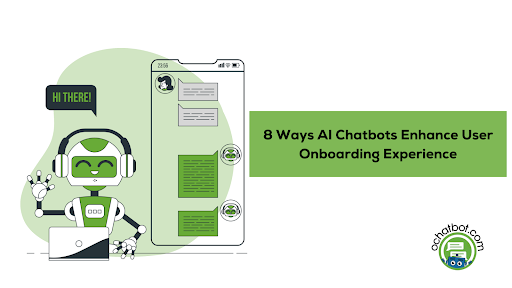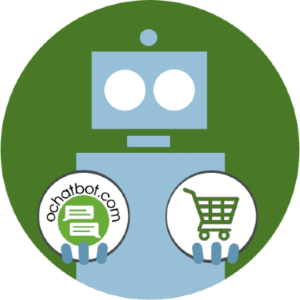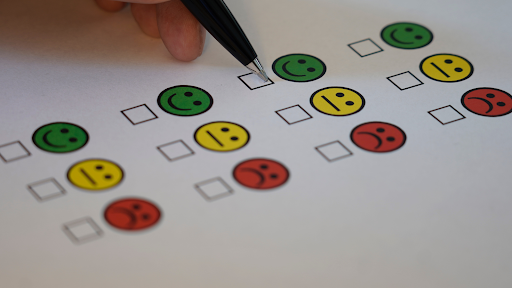
In an eCommerce store or any business, the user experience is one of the most influential factors that decide the success of the business and establish a relationship with the customer.
As a digital business owner, you might have successfully led users engaged in your marketing campaign, acquired leads, and even converted them to customers. But your duty as a business owner does not end there. Businesses need to provide avenues and tools to equip themselves before beginning to use the product/service efficiently.
However, new customers might face hardships during onboarding experiences or have some doubts relating to your product or service. In such cases, employing a chatbot to ease up or simplify the customer onboarding process can influence the experience of the user.
In this article, let us see what user onboarding is and all the different ways AI chatbots can help enhance the user onboarding experience.

What is User Onboarding and Why is it Important?
When a customer subscribes to your service or buys your product, they might not instantaneously be able to master your product/service or learn to use it efficiently. There needs to be a facilitator to help them with the initial setup and efficiently get them to use the product.
In simpler terms, “user onboarding” refers to the process of initially setting up the product/service based on customer requirements, and helping them become proficient in working with the product/service.
User onboarding is an element of user experience that is often overlooked. The user onboarding process can help set up the goodwill of the customer and establish a positive and consistent brand image in the eyes of the user in the long run. It is a crucial stage during their journey where time, accuracy, and promptness dictate the likelihood of conversions. A poor onboarding process will have your prospects hop on elsewhere.

Generative and Scripted AI to engage shoppers in conversational eCommerce.
Create happy customers while growing your business!
-
1 out of 4 shoppers make a purchase on average*
-
5% to 35% Increase in AOV*
-
25% to 45% Reduction in Support Tickets
WE GUARANTEE RESULTS!
*When shoppers engage with Ochatbot®
How Do AI Chatbots Help
Earlier methods of user onboarding relied on the use of e-books or manuals to onboard the user, whereas later methods employed emails, product tours, images, and video tutorials that enabled the user to have a better onboarding experience. However, the most recent innovation in the way businesses onboard users has been taken over by AI chatbots.
Chatbots not only are deployed to help customers with their onboarding experience but also help onboard employees to get a better understanding of the process in an enterprise or firm.
A well-designed chatbot adapts to customers’ preferences and behavior over a period of time and makes it easy for them to get value from the product. With this, you can target specific users based on their needs by offering them relevant tips and information regarding the product.
A chatbot can automate the process by collecting the necessary information about the customer’s preferences and getting more insights into what works best for them and enhances the business.

8 Ways AI Chatbots Can Be Used for User Onboarding
AI chatbots are becoming a great contributor to enhancing the user experience by simplifying mechanisms. With a proper user onboarding experience guaranteed by the chatbots, businesses can retain potential clients and customers.
Here are some ways AI chatbots can help enhance the user onboarding experience.
1. Faster Onboarding
During the initial stages of the customer funnel, the customer will have queries regarding the product or service. During this stage, it is important to deploy a well-built chatbot that improves productivity and impresses new clients.
It offers instant guidance to new and returning users. By automating these processes, you will be able to reach more people in less time. This helps to focus on other areas of growth such as customer support to drive sales.
2. Personalized User Activation
Personalization is one of the major factors that customers look for. 60% of consumers say they’ll become repeat customers after a personalized shopping experience. Chatbots are able to provide personalization with the data fed by the developer. This data includes the user names, location, and previous purchase history if any.
In more advanced scenarios, the chatbot engages users in conversational surveys to collect data, guiding them to express their interests and preferences, ultimately setting up a personalized user profile. Moving forward, users have the freedom to customize their profiles according to their preferences and evolving needs.
AI chatbots also help analyze customers’ responses, their feedback, and product behavior to tailor the in-app guidance such as websites, mobile apps, and any other application to their needs.
3. Refine Messaging to Increase Engagement
Customer engagement is a necessary factor for effective user onboarding and positive user experience.
This can be achieved by collecting data efficiently to provide personalized messages depending on the user query. To drive effective product adoption, the user onboarding process needs to be clear and precise in addressing the customer’s queries.
4. Create a List of Onboarding Questions and Acquire Details
During the process of onboarding a customer, there will be details associated with the product or service. Collecting those details through fillable fields can be a tedious process. The chatbot acquires the data by conversationally engaging with the users and thereby personalizing the process.
Prioritize collecting essential information that benefits users. The essential information typically depends upon the specific context, business, industry, and objective for a personalized experience. Some of the common information includes name, email address, location, preference, purchase history, contact information, demographic information, and user’s goal and interest.
Avoid overwhelming users with too many questions at once. Ensure that the acquired information is seamlessly integrated into the user’s profile for future interactions and personalized experiences.
5. Offer Onboarding via Their Preferred Channel
Just like a personalized profile, customers also prefer certain channels for the onboarding process. Examples of third-party applications preferred for onboarding are Telegram, WhatsApp, Facebook, Instagram, and so on.
6. Offer Help with Sentimental Analysis
In some cases, customers may have doubts or may not be satisfied with products or services. With the help of Natural Language Processing (NLP) and Natural Language Understanding (NLU), the AI chatbot analyzes the satisfaction level of the user by understanding their replies and queries. Based on this information, the chatbot can ascertain the satisfaction or lack thereof and proceed accordingly to the onboarding process that appeals to the user.
When performing a sentimental analysis, it requires a large amount of data and that is where an AI chatbot excels. The AI chatbot collects a vast amount of data from various sources such as social media, customer feedback, reviews, and interactions with users. Their ability to collect large amounts of data and continuous learning capabilities make them valuable tools for sentiment analysis.
7. Offer Better Support While User Onboarding
Even though the chatbot offers a great deal of help, customers will have some queries and questions in their minds regarding the process and the product or service. Chatbots are available 24/7 and easily automate routine tasks such as FAQ’s.
AI-based Chatbots are trained using machine learning algorithms and understand open-ended queries. It not only comprehends orders but understands the language. Chatbots learn from user interaction and feedback enabling them to constantly improve their performance and understand customer needs in order to provide accurate and relevant assistance. The chatbot can assist customers with common inquiries or redirect them to a human agent to have more personalized assistance.
8. Less Churn Rate at a Lower Price
Churn Rate is a metric that measures the percentage of customers who discontinue a product or service over a period of time. Chatbots can use predictive analysis that uses past data to predict future behavior. It helps to identify the user segment at the risk of churn, thereby proactively preventing this by addressing their pain points and improving their morale.

Frequently Asked Questions
1. What are NLP and NLU?
Natural Language Processing (NLP) is an engine for a chatbot to understand the user intent based on the conversation and fetch the appropriate response from the database. Natural Language Understanding (NLU) reveals the meaning of the user’s input and focuses on machine reading comprehension.
2. What are the challenges users come across during the onboarding process?
Connectivity problems during the onboarding can hinder the process and create a negative impression of the brand. The onboarding process has to be lag-free. The onboarding process can be difficult to navigate when it lacks clear information. Businesses have to focus on creating a smooth and user-friendly onboarding experience. For over 6 in 10 users, their onboarding experience with a company makes or breaks the deal.
3. How does a chatbot drive more value than conventional onboarding processes?
A well-designed chatbot provides a personalized experience and is able to adapt to the user’s unique preferences and interests. It automates the process by collecting information about customer’s perferences and businesses can understand what works best for them. Offering relevant tips and advice based on insights of previous behavior increases the chances of conversion.
User Onboarding is Enhanced with AI
An AI chatbot assists new users in learning about the product and services – their features and functionality, as well as providing help when a customer gets stuck along the way. It is important to remember that onboarding isn’t just about signing in or downloading the app but for the users to understand the product or service and how it adds value to them.
Chatbots are cementing their presence in almost all online fields, providing customers with a conversational interface that’s easy to use, accessible, and convenient and helps new users with a great onboarding process.
- 8 Ways AI Chatbots Enhance User Onboarding Experience - November 2, 2023
- Customer Service: The Underdog in Closing a Deal - September 8, 2022
